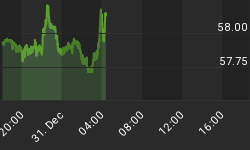Initial Reaction
Today's employment report shows a robust increase of 235,000 jobs. And for the first time in many months, the rest of the report was good as well.
Revisions
The change in total nonfarm payroll employment for December was revised down from +157,000 to +155,000, and the change for January was revised up from +227,000 to +238,000. With these revisions, employment gains in December and January combined were 9,000 more than previously reported. Monthly revisions result from additional reports received from businesses since the last published estimates and from the recalculation of seasonal factors. Over the past 3 months, job gains have averaged 209,000 per month.
Let's dive into the details in the BLS Employment Situation Summary, unofficially called the Jobs Report.
BLS Jobs Statistics at a Glance
- Nonfarm Payroll: +235,000 - Establishment Survey
- Employment: +447,000 - Household Survey
- Unemployment: -107,000 - Household Survey
- Involuntary Part-Time Work: +242,000 - Household Survey
- Voluntary Part-Time Work: +286,000 - Household Survey
- Baseline Unemployment Rate: -0.1 to 4.7% - Household Survey
- U-6 unemployment: -0.2 to 9.2% - Household Survey
- Civilian Non-institutional Population: +164,000
- Civilian Labor Force: +340,000 - Household Survey
- Not in Labor Force: -176,000 - Household Survey
- Participation Rate: +0.1 to 63.0 - Household Survey
Employment Report Statement
Total nonfarm payroll employment increased by 235,000 in February, and the unemployment rate was little changed at 4.7 percent, the U.S. Bureau of Labor Statistics reported today. Employment gains occurred in construction, private educational services, manufacturing, health care, and mining.
Unemployment Rate - Seasonally Adjusted

Nonfarm Employment Change from Previous Month

Nonfarm Employment Change from Previous Month by Job Type

Hours and Wages
Average weekly hours of all private employees were steady at 34.4 hours. Average weekly hours of all private service-providing employees were steady at 33.2 hours. Average weekly hours of manufacturers were steady at 40.8 hours.
Average hourly earnings of private workers rose $0.04 to $21.86. Average hourly earnings of private service-providing employees rose $0.02 to $21.61. Average hourly earnings of manufacturers rose $0.03 to $20.65. All of those gains were a mirage because of downward revisions of gains in January.
For a discussion of income distribution, please see What's "Really" Behind Gross Inequalities In Income Distribution?
Birth Death Model
Starting January 2014, I dropped the Birth/Death Model charts from this report. For those who follow the numbers, I retain this caution: Do not subtract the reported Birth-Death number from the reported headline number. That approach is statistically invalid. Should anything interesting arise in the Birth/Death numbers, I will comment further.
Table 15 BLS Alternate Measures of Unemployment

Table A-15 is where one can find a better approximation of what the unemployment rate really is.
Notice I said "better" approximation not to be confused with "good" approximation.
The official unemployment rate is 4.7%. However, if you start counting all the people who want a job but gave up, all the people with part-time jobs that want a full-time job, all the people who dropped off the unemployment rolls because their unemployment benefits ran out, etc., you get a closer picture of what the unemployment rate is. That number is in the last row labeled U-6.
U-6 is much higher at 9.2%. Both numbers would be way higher still, were it not for millions dropping out of the labor force over the past few years.
Some of those dropping out of the labor force retired because they wanted to retire. The rest is disability fraud, forced retirement, discouraged workers, and kids moving back home because they cannot find a job.
Strength is Relative
It's important to put the jobs numbers into proper perspective.
- In the household survey, if you work as little as 1 hour a week, even selling trinkets on eBay, you are considered employed.
- In the household survey, if you work three part-time jobs, 12 hours each, the BLS considers you a full-time employee.
- In the payroll survey, three part-time jobs count as three jobs. The BLS attempts to factor this in, but they do not weed out duplicate Social Security numbers. The potential for double-counting jobs in the payroll survey is large.
Household Survey vs. Payroll Survey
The payroll survey (sometimes called the establishment survey) is the headline jobs number, generally released the first Friday of every month. It is based on employer reporting.
The household survey is a phone survey conducted by the BLS. It measures unemployment and many other factors.
If you work one hour, you are employed. If you don't have a job and fail to look for one, you are not considered unemployed, rather, you drop out of the labor force.
Looking for jobs on Monster does not count as "looking for a job". You need an actual interview or send out a resume.
These distortions artificially lower the unemployment rate, artificially boost full-time employment, and artificially increase the payroll jobs report every month.
Final Thoughts
Details last month were terrible. This month. the establishment survey and the household survey were in sync. However, employment growth still lags job growth despite the huge jump in employment of 447,000.
A year ago there were 151,043,000 employed. Today there are 152,528,000 employed. That's a gain of 1,485,000 which equates to 123,750 per month.
Last month, I reported, "Employment growth was +129,000 on average from a year ago, +79,000 per month since March and only +11,000 per month for the last three months."
Over the last four months the gain in employment averages about 120,000 a month.
The divergence between jobs and employment is still strong.
















